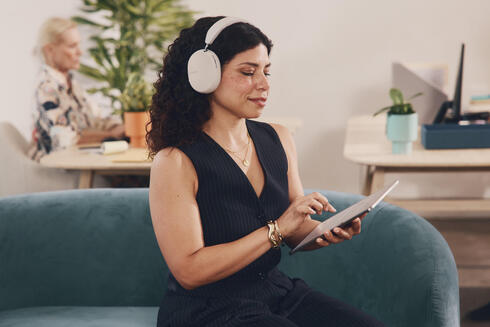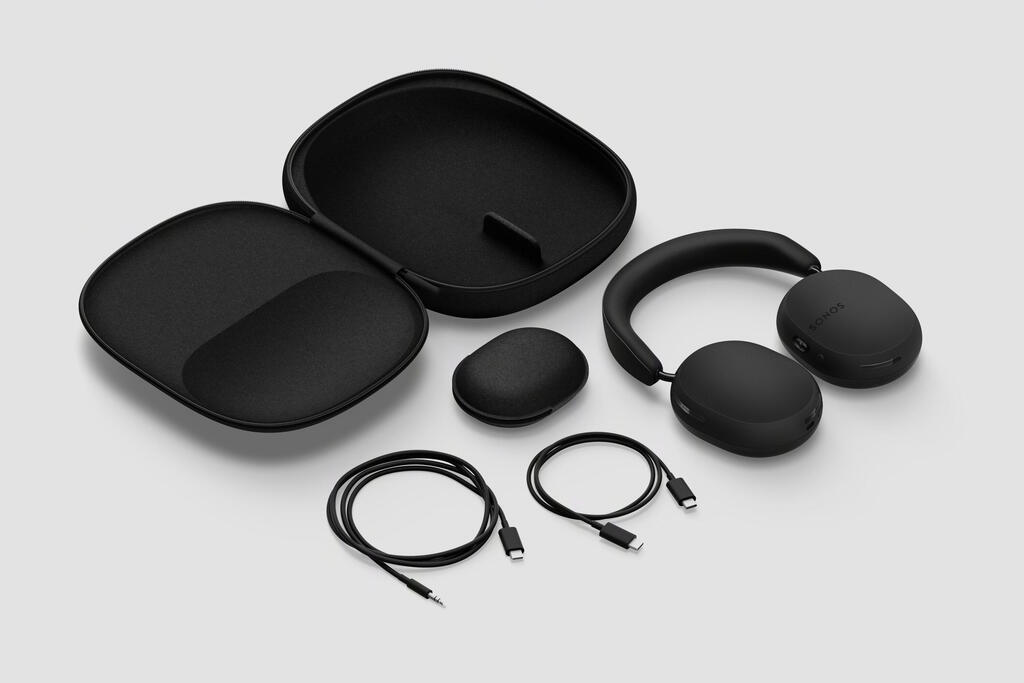
Gadget review
Sonos Ace headphones: Premium sound meets limitations
The acclaimed speaker manufacturer enters a new field, with premium headphones that promise a lot. They really provide excellent sound, but along the way there are a series of limitations and various conditions that do not always allow you to get the most out of them.
Top Line
The Sonos Ace headphones are excellent and a very successful achievement for Sonos' first product in the field. They are also excellent as "just" premium Bluetooth headphones: the operation is simple, the choice of physical buttons is smart, the noise filtering is very good, and the sound is excellent. But to get the most out of them right now, at least until the updates that Sonos promises arrive, they alone will not be enough. Who is the target audience that can use all the features? Anyone who has at least one more Sonos speaker, and right now it's only two specific models, an iOS device, and can spend $500 on headphones. Even when you already have all the appropriate equipment, the app gets in the way a bit. Sonos enters the competition against quite a few successful models at similar or relatively close prices – from Sony, Bose, and Apple, to name a few. Now it needs to keep its promises about updates and make another batch of improvements to the app.
Lightweight and easy to operate
The Ace headphones are Over Ear, meaning they cover the entire ear and do not "sit" on it. This makes them large, but the design is not bombastic. They weigh a little more than 310 grams and do not feel heavy, thanks to good weight distribution. Even when you take them off, they don't take up much space – although they don't fold, you can rotate the headphones to put them down relatively flat. The design is clean: the company logo is on the right side, but it's barely visible. The inner lining of each earphone has a different color to help remember how to wear them, and there's also a slightly hidden L and R marking.
Sonos chose to use physical buttons to operate the headphones rather than a touchpad controlled by gestures. On the left side is an on and off button and next to it is a USB-C socket for charging or for a wired connection. On the right side, there is a "content button" to start and stop audio or calls and control the volume. Next to it is a button for noise isolation control. The operation is simple, and the choice of physical buttons is smart and successful: you press the "content button" to play or stop a song, and also to answer or hang up a call. You slide the same button up or down to increase or decrease the volume. A double click will take you to the next song, and a triple click will take you back to the previous song. There is no button to expand the bow to adjust it to a different head size – you just pull the headphones in the desired direction and size. The ear cushions are comfortable, and the Ace does not press on your head.
The app is has problems
The connection and activation process is simple and standard: turn on the headphones, connect them via Bluetooth, and off you go. You can also use the Sonos app, and this is where the series of limitations, asterisks, and conditions begin. The company announced an upgrade to the application even before the launch of the headphones. The new version was met with negative reviews, and personal experience also raises some problems. After connecting the headphones via Bluetooth, a message appeared every time the application was launched that there was no device connected, along with an offer to configure a new device. Only after a short wait did the app recognize the headphones and display them. You can get by with this, but there are options and features that are only available in the app, and as long as it doesn't recognize the headphones, you can't turn them on or off.
Through the application, it should be possible to connect external content services such as Apple Music or Spotify, but on Android, I could not open this menu. On the iPad, it opened, but I couldn't find content services to add. After I added the Sonos Arc sound bar to the application, the menu opened, and the Sonos radio service was already waiting for me. I was able to add Spotify and Apple Music without a problem.
Quality depends on more than Sonos
After turning on the headphones, even before you choose what to play, you immediately feel a bit disconnected from the world, thanks to the Ace's noise-canceling mechanism. The disconnection is not complete: the noises around you weaken significantly, but you can still hear some of them, albeit distant and in the background. You can change this setting by pressing a button on the headphones or in the application menu, and the microphones in the headphones will transmit the sounds into the ear. The transition through the microphones is well-felt – the sounds sound as if they were coming from a recording.
So how are the headphones themselves? As you would expect from Sonos, the sound is excellent. I'm a bass fan, but in some parts, it stood out a bit too much. This can also be changed in the Sonos app. Surprisingly, there are no preset equalizer settings, such as pop, rock, or classical. The sound quality also depends on its source and the recording: there were sections where you could hear each instrument coming from a different place, and in other sections, the quality was still excellent, but without such division.
Here we come to another asterisk, which does not depend only on Sonos: the Ace supports the Dolby Atmos format, offering spatial audio. To enjoy it, you need a song recorded or upgraded to this format, a content service that supports the format, and a suitable end device (speaker or headphones). About a year ago, I tested Sonos' Era 300 speaker, which also supports this format, and the result was impressive – there was a clear and noticeable gap between a song played from Spotify, which does not include spatial audio, and the same song on Apple Music, which supports the format. It was a clear knockout achieved in seconds, and I expected a similar effect, maybe even more pronounced in headphones because they are closer to the ears and surround them. But Sonos explains that to achieve such an effect, you also need to connect to the company's Soundbar. If you don't have one, you won't be able to get the most out of the headphones.
Despite this explanation, I could swear that certain compositions sounded better through Apple's service when I played it from the iPad. I tested Apple's music service on Android, and there I didn't feel a difference in the sound quality. Even when I connected the company's Arc speaker, I tried to find noticeable differences in the audio, and I'm not sure there are any. After the quick knockout with the Era 300 last year, the very fact that I even looked for differences means that the effect is not noticeable here. In any case, compared to my normal headphones, the difference is clear, and the Ace offers better quality sound and much more depth. The search for suitable content is also a problematic point, and it does not depend only on Sonos: Apple's service has playlists of spatial audio and division by genre, but if you want to search for songs yourself, there is no clear marking as to whether they support the format or not – you will find these details, but only next to the album name.
If you have a Sonos Soundbar, you can also transfer the audio from the speaker to the headphones with the push of a button. Yes, there are a few asterisks here too – this service is only available for Sonos' Arc devices, and the company says it will soon reach Beam and Ray. Additionally, it is currently only available on iOS, and it will come to Android soon. Running the audio transfer service also encountered a problem with the app – I followed the instructions, and a message appeared that the process was complete, yet the feature was not available. I insisted, tried again, and finally, it worked. When it works, it's about transferring audio from the TV only – if you listen to songs directly through the soundbar, you won't be able to transfer the audio from the speaker to the headphones. If you listen to a song or watch a movie or program through the TV connected to the Arc, you can transfer the sound between them with the push of a button. One more asterisk – when I transferred the audio between the two products and returned it to the speaker again, the volume weakened significantly.
The headphones can also be used with a wired connection, and Sonos has included appropriate connections in the kit – both a USB-C to USB-C cable for charging or listening and a USB-C to a standard headphone jack. The battery should be enough for 30 hours of listening, and after much use of the Ace, which initially was not fully charged, the Sonos app showed that more than 20% remained. I also used the headphones to make calls, and it worked fine too. Personally, I prefer small and separate TWS headphones and make calls with one earpiece to avoid the feeling that I hear myself. With the Ace, it's not possible, but this time it didn't bother me. On the contrary, I felt that it helped to conduct the conversation quietly and without outside interruptions. I didn't hear any complaints or comments from the other side about the audio quality.















